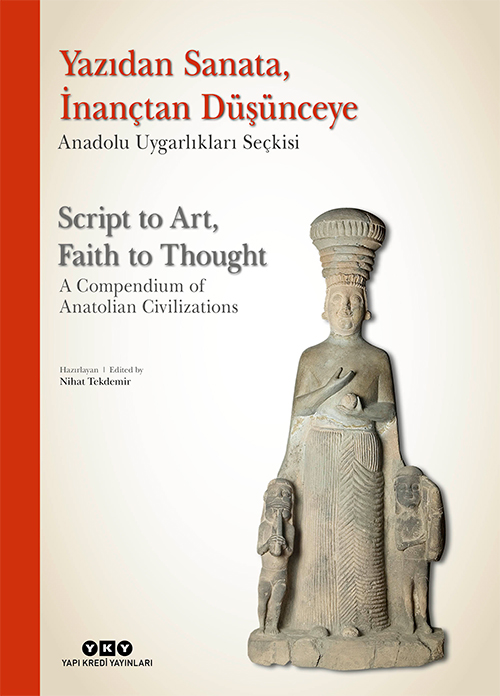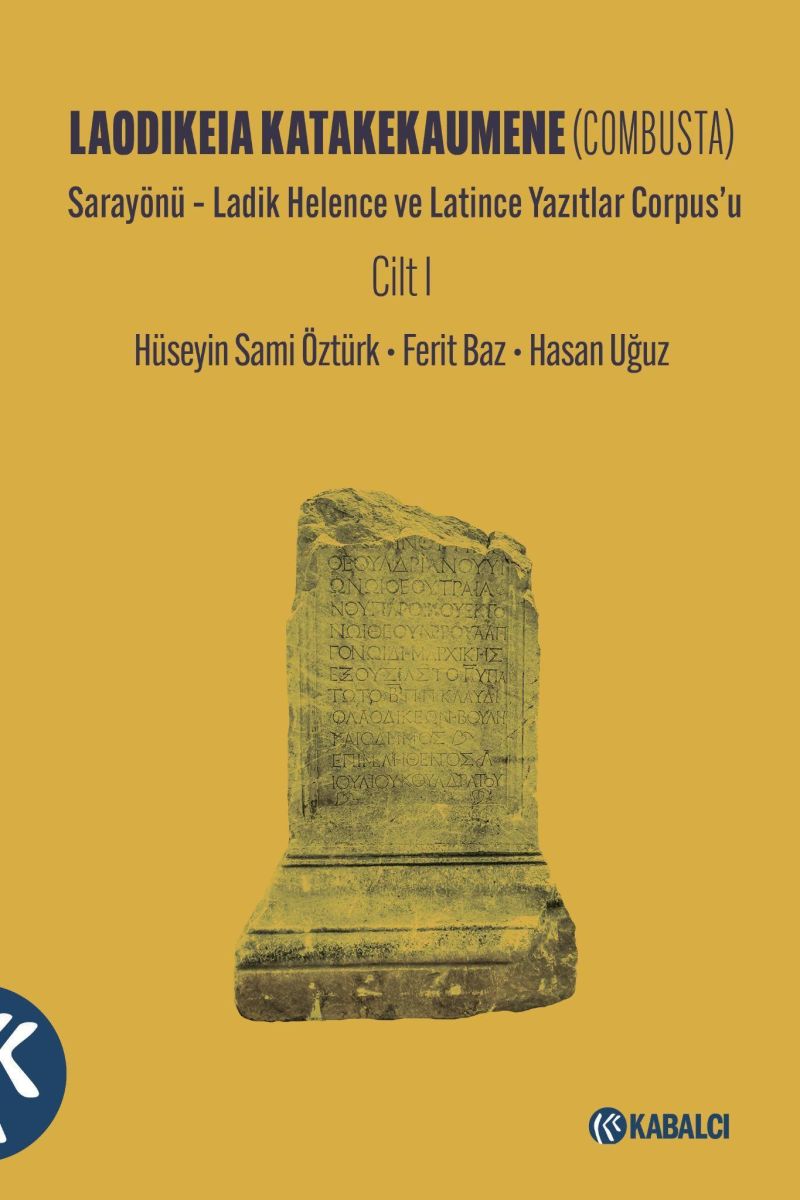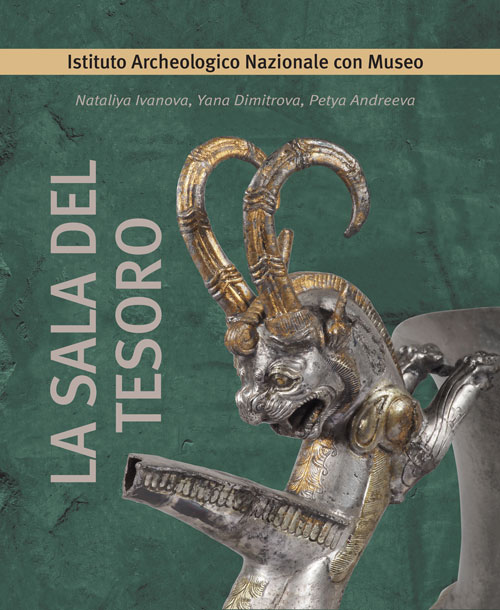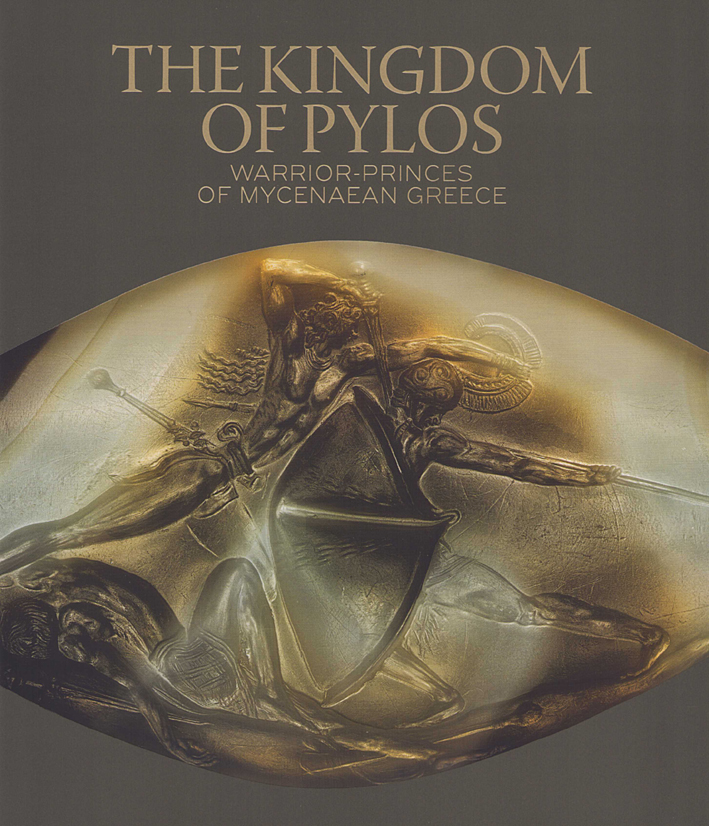Willkommen im Online Shop des Phoibos Verlages
Aktuelle Information
Die in den Kategorien Sonderangebote und Antiquariat aufgeführten Bücher werden mit 10% Rabatt abverkauft, stärker preisreduzierte Titel sind speziell gekennzeichnet; der Rabatt wird erst im Warenkorb ausgewiesen.Über uns
Der Phoibos Verlag wurde im Jahr 1992 mit dem Ziel gegründet, archäologische und althistorische Fachliteratur aus den Arbeitsbereichen der österreichischen Universitätsinstitute zu publizieren und international zu vertreiben. Aus dieser Arbeit entstanden nach und nach Kooperationen mit außeruniversitären archäologischen/althistorischen Einrichtungen sowie Institutionen anderer Fachgebiete.
Das Verlagsprogramm wuchs über den anfangs definierten Themenschwerpunkt hinaus: Es umfasst nun unter anderem auch Reiseberichte, Führer und Kataloge, Abhandlungen zur Architektur diverser Epochen sowie Publikationen, die sich dem Thema Eisenbahn und öffentlicher Nahverkehr widmen.

Vera Bulgurlu – Thomas Drew-Bear – Feza Demirkök,Koç Üniversitesi arkeolojik koleksiyonu / The Koç University archaeological collectionIstanbul 2018ISBN 978-605-2116-31-9144 S./pp., zahlr. Farb- und S/W-Abb. / num. colour and b/w-figs., 24 x 16,5 cm; broschiert / softcover

Hazar Kaba – Gülseren Kan Şahin – Babür Mehmet Akarsu – Onur Bozoğlan (eds.),International Symposium on Sinope and the Black Sea Archaeology 'Ancient Sinope and The Black Sea' : proceedings book / Uluslararası Sinope ve Karadeniz Arkeolojisi Sempozyumu „Antik Sinope ve Karadeniz“: bildiriler kitabıSinop 2019ISBN 978-605-88024-8-3VIII + 206 S./pp., zahlr. Farb- und S/Wabb. / num. colour and b/w-figs., 29,7 x 21 cm; broschiert / softcover

Προσόδια: Μελέτες για τις αρχαίες λατρείες προς τιμήν του Μανόλη Βουτυρά / Prosodia. Studies on Greek and Roman Cults in Honour of Emmanuel VoutirasAthen 2025ISBN 978-960-386-731-9XXX + 497 S./pp., zahlr. S/W-Abb. / num. b/w-figs., 29,7 x 21 cm; kartoniert/hardcover

Aykut Şengözer – Aslı Özbay (eds.),Barbarossa’s Çinili Hamam: A Masterpiece by SinanIstanbul 2023ISBN 978-625-7008-72-3344 S./pp., zahlr. Farbabb./num. colour-figs., 29 x 23 cm; kartoniert/hardcover Published simultaneously with the opening of Zeyrek Çinili Hamam, Barbarossa’s Çinili Hamam: A Masterpiece by Sinan is an invaluable reference chronicling the five-century story of this magnificent cultural heritage site from its construction to the present day as well as the striking aspects that distinguish it from similar structures. Once standing gloriously in Zeyrek that was a prominent district during both Byzantine and Ottoman periods, the hammam afterwards was lost to oblivion behind modern buildings. Product of a two-year painstaking work, the book offers new information that came into light during the thirteen-year-long restoration on top of the already existing academic sources. The articles penned by scholars and experts offers an insight and illuminating information from the sociological aspect of the hammams to Çinili Hamam’s tiles and ornamentation program, from its restoration process to the splendid hammamiye tiles and the journey of its tiles that were sold in Europe in the 19th century. The book is equally absorbing for both academics and readers that take interest in architecture and history. Edited by Aykut Şengözer and Aslı Özbay and designed by Yeşim Demir Pröhl, the book features articles by Leyla Kayhan Elbirlik, Cengiz Kabaoğlu, Bora Keskiner, Tim Stanley, Yavuz Suyolcu, M. Baha Tanman and Filiz Yenişehirlioğlu and photographs by Murat Germen and Orhan Cem Çetin that bring out the beauty of every part of the hammam.

Nihat Tekdemir (ed.),Script to Art, Faith to Thought – A Compendium of Anatolian CivilizationsIstanbul 2025ISBN 978-975-08-6623-4 (paperback) ISBN 978-975-08-6624-1 (hardcover) XX + 396 S./pp., zahlr. Farb- und S/W-Abb./num. colour and b/w-figs., 33 x 23,5 cmzweisprachig englisch – türkischbilingual english – turkish

Bilal Söğüt (ed.), Muğla Kazı ve Araştırmaları IAnkara 2025 ISBN 978-625-6925-91-5XII + 421 S./pp., zahlr Farb- und S/W-Abb./num. colour and b/w-figs., 29,7 x 21 cm; kartoniert/hardcover

Μιχάλης Α. Τιβέριος / Michalis A. Tiverios, Η Ακαδημία Αθηνών αναζητεί την προμήτορά της: η ανορθόδοξη ανασκαφή του Παναγιώτη Αριστόφρονα στην Ακαδημία Πλάτωνος και η οδύσσεια του (1930-1939) / He Akademia Athenon anazetei ten prometora tes(Ακαδημία Αθηνών, Εκδόσεις Κέντρου Ερεύνης της Αρχαιότητος. Σειρά Μονογραφιών 10)Athens 2025ISBN 978-960-404-443-6128 S./pp., zahlr. S/W-Abb./num. b/w-figs., 27 x 20 cm; broschiert/softcover

N. Eda Akyürek Şahin – Roman Jacobek – Fatih Onur – Diether Schürr (Hrsg./eds.),Von Damaskus bis Rom. Wilhelm Müseler, Gesammelte Schriften.(Gephyra Monographs 7)Wien 2025ISBN 978-3-85161-320-9722 S./pp., zahlr. S/W-Abb. / num. b/w-figs., 29,7 x 21 cm; kartoniert / hardcoverDer Band "Von Damaskus bis Rom" versammelt 25 Beiträge des Numismatikres Wilhelm Müseler in deutscher und englischer Sprache, die in den Jahren 1990 bis 2025 erschienen sind sowie einen bislang unpublizierten Aufsatz.The volume “From Damascus to Rome” brings together 25 articles by numismatist Wilhelm Müseler in German and English, published between 1990 and 2025, as well as a previously unpublished essay.Bis 31.12.2025 gilt der Subskriptionspreis in Höhe von 99 €.The subscription price of €99 is valid until December 31, 2025.

Biba Teržan,Vače II. Halštatske najdbe v Naravoslovnem muzeju na Dunaju / Hallstattzeitliche Funde im Naturhistorischen Museum Vienna / Hallstatt Period Finds in the Natural History Museum Vienna(Catalogi et Monographiae / Katalogi in monografije 47)Ljubljana 2025ISBN 978-961-6981-81-1ca. 448 S./pp., zahlr. Farb- und S/W-Abb. / num. colour and b/w-figs., 34 x 23,5 cm; kartoniert mit Schutzumschlag / hardcover with dust jacket
![Olbrycht, Marek Jan – Sabine Müller (eds.) : Cities, Trade, and Roads. From the Mediterranean to Iran and the Indus Valley (Anabasis. Studia Classica et Orientalia, nr 12-13 [2021-2022]) Olbrycht, Marek Jan – Sabine Müller (eds.) : Cities, Trade, and Roads. From the Mediterranean to Iran and the Indus Valley (Anabasis. Studia Classica et Orientalia, nr 12-13 [2021-2022])](https://phoibos.at/media/71/a3/ef/1760974966/anabasis_12_13.jpg?ts=1760974966)
Marek Jan Olbrycht – Sabine Müller (eds.), Cities, Trade, and Roads. From the Mediterranean to Iran and the Indus Valley (Anabasis. Studia Classica et Orientalia, nr 12-13 [2021-2022])Rzeszów 2024ISBN 978-83-8277-202-9ISSN 2082-8993408 S./pp., zahlr. Farb- und S/W-Abb./num. colour and b/w-figs., 23,5 x 16 cm; kartoniert/hardcover

TÜBA - AR 36Türkiye Bilimler Akademisi Arkeoloji Dergisi 36, 2025Ankara 2025ISSN 1301-8566192 S./pp., zahlr. Farb- und S/W-Abb./num. colour and b/w-figs., 29,7 x 21 cm, broschiert/softcoverArtikel in Türkisch und Englisch / articles in turkish and english

Giacomo Casa, Il restauro architettonico a Pompei. Cantieri, Tecniche e Valenze ideologiche(Mediterranean Architecture in Context, International Series, [MAC] Volume I)Istanbul 2025ISBN 978-625-6212-31-2VIII + 460 S./pp., zahlr. Farb- und S/W-Abb./num. colour and b/w-figs., 34 x 24,5 cm; kartoniert/hardcover

Studies in Honour of A. Tuba Ökse. From the Halys to the Euphrates and Tigris: In the Footsteps of Cultures and Civilizations / A. Tuba Ökse'ye Armağan. Kızılırmak'tan Fırat Ve Dicle'ye: Kültürlerin Ve Uygarlıkların İzindeAnkara 2025 ISBN 978-625-6925-90-8XII + 907 S./pp., zahlr Farb- und S/W-Abb./num. colour and b/w-figs., 29,7 x 21 cm; kartoniert/hardcover

Hüseyin Sami Öztürk – Ferit Baz – Hasan Uğuz,Laodikeia Katakekaumene (Combusta):Sarayönü – Ladik Helence ve Latince Yazıtlar Corpus’u Cilt I . Istanbul 2025ISBN 978-625-5621-15-3160 S./pp., zahlr. S/W-Abb./num. b/w-figs., 24 x 16 cm; broschiert/softcoverDie Stadt Laodikeia Katakekaumene (Combusta), die seit Ende des 19. Jahrhunderts von vielen europäischen Wissenschaftlern besucht wurde, befindet sich im heutigen Bezirk Sarayönü der Provinz Konya in der Gemeinde Lâdik. Die ersten umfassenden Untersuchungen zu den Inschriften der antiken Stadt wurden 1910 und 1911 vom Archäologen W. M. RAMSAY und dem Archäologen und Epigraphiker W. M. CALDER durchgeführt. Im Jahr 1925 wurde ein Team bestehend aus W. M. CALDER, R. K. LAW und P. L. MCDOUGALL von der American Archaeological Research Association zu Forschungszwecken in die Region Ostphrygien entsandt. CALDER und sein Team führten epigraphische Oberflächenuntersuchungen von Lystra aus in Richtung Norden bis zur Grenze zwischen Phrygien und Lykaonien durch. Die 439 Inschriften, die während der Arbeiten gefunden wurden, wurden zusammen mit den veröffentlichten Inschriften in Band I der Monumenta Asiae Minoris Antiqua mit kritischen Ausgaben veröffentlicht. Eine weitere systematische epigraphische Untersuchung in der Stadt und ihrer Umgebung wurde 1994 von Hasan BAHAR im Rahmen der Oberflächenuntersuchung in den Provinzen und Bezirken Konya und Karaman durchgeführt, an der auch der Epigraphiker Thomas DREW-BEAR beteiligt war; eine umfassende Veröffentlichung dieser Arbeiten ist jedoch nicht erfolgt. Neben diesen Arbeiten wurden unabhängig davon vom Archäologischen Museum Konya in der Region durchgeführte Ausgrabungen und oberirdisch gefundene Inschriften in Ladik und Umgebung gesammelt. Die Inschriften in dem vorliegenden Buch umfassen den ersten Band der Inschriften, die dank der Bemühungen des Archäologischen Museums Konya zusammengetragen wurden. Dieser Band enthält insgesamt 112 Inschriften, von denen die meisten Grabinschriften sind. Einige dieser Inschriften wurden bereits zuvor veröffentlicht, andere wurden jedoch um Addenda, Corrigenda oder neue Kommentare ergänzt. Neben Grabinschriften enthält dieses Korpus auch Widmungs-, Bau-, Opfer-, Maß- und Fragmentinschriften, darunter vor allem eine Inschrift auf einer Statue, die Kaiser Lucius Verus gewidmet ist. Ein Großteil der Inschriften stammt aus der Zeit des Römischen Reiches, aber auch Inschriften aus der Spätantike und sogar aus der mittelbyzantinischen Zeit sind in der Studie enthalten. Einige Inschriften weisen auf die Besitztümer der römischen Kaiser hin. Beispielsweise werden in den Inschriften Sklaven oder Freigelassene des Kaisers erwähnt. Gleichzeitig belegen die Inschriften auch die Existenz einer dichten christlichen Bevölkerung in dieser Region. So gehören beispielsweise einige der Grabinschriften aus der Spätantike christlichen Personen mit dem Rang eines Presbyteros oder Diakons.

Ivan Josipovič – Miljenko Jurkovič (eds.), Aspice hunc opus mirum. Zbornik povodom sedamdesetog rođendana Nikole Jakšića / Festschrift on the occasion of Nikola Jakšic's 70th birthdayZadar – Zagreb – Montovun 2020ISBN 978-953-331-304-7 220 S./pp., 233 Farb- und S/W-Abb./num. colour and b/w-figs., 23,5 x 16,5 cm; broschiert/softcover zweisprachig kroatisch - englischbilingual croatian - english

Die frühneuzeitlichen religiösen Medaillen und Anhänger aus den archäologischen Grabungen am St. Pöltner Domplatz(Wissenschaftliche Reihe des Stadtmuseums St. Pölten [WISP], Band 3)St. Pölten 2025ISBN 978-3-9505220-5-1244 S./pp., zahlr. Farb- und S/W-Abb./num. colour and b/w-figs., 29,7 x 21 cm; broschiert/softcover

Nataliya Ivanova – Yana Dimitrova – Petya Andreeva, La Sala del Tesoro(National Archaeological Museum. Catalogues. Volume 41) Sofia 2023ISBN 978-619-254-022-7ISSN 2367-8860)84 S./pp., zahlr. Farbabb./num. colour figs., 25 x 21 cm; broschiert/softcover

Fotis Georgiadis – Anastasia Gadolou / Φώτης Γεωργιάδης – Αναστασία Γκαδόλου,In the Cave. Stories from Darkness Brought to Light / Στη σπηλιά. Ιστορίες από το σκοτάδι στο φωςAthen 2025ISBN 978-960-204-472-8336 S./pp., 475 Abb., Karten, Zeichnungen / illustrations, maps, drawings, 29 x 21,5 cm; kartoniert/hardcoverzweisprachig englisch – griechisch / bilingual english – greek The present comprehensive scientific catalogue accompanies and documents the important new temporary exhibition by the Ministry of Culture, organized by the Ephorate of Palaeoanthropology-Speleology and the Archaeological Museum of Thessaloniki, entitled “In the cave: stories from darkness brought to light”. Original in its concept, this exhibition uses an interdisciplinary approach to highlight the timeless and multifaceted relationship between humans and caves – a relationship that endures, unbroken, from the Paleolithic period until modern times. The subject reflects the timeless and multilayered significance of caves in the life and culture of humankind. From the beginning of human evolution, caves were not only refuges from the elements and from predators, but also served as the cradle for early so-cialization, creativity and the exchange of knowledge, key for cultural development. Even when they ceased to be used for primary habitation, caves retained their primeval association with religion and transcendency, archetypal meanings and symbolism, making them timeless landmarks in myth and in collective historical memory, as well as sources of inspiration for contemplation and the arts. New among these layers of meaning – not replacing them – is the modern scientific interest in understanding the history of human interaction with the natural environment. Literally and metaphorically, the exhibition “In the cave” aims to bring this profound and timeless relationship into the light. Through the distinct thematic and chronological units and select displays, which include anthropological, paleobotanical and paleozoological material, as well as representative archaeological finds – from prehistoric tools, utilitarian, religious and precious objects, to inscriptions and works of art from all periods – the public has the chance to conceptually travel back in time and discover the numerous aspects of life and culture relating to caves. Caves are offered as witnesses to human history, and as gateways connecting us to our primordial roots and nature itself. Inspiring awe and curiosity and raising awareness among the public, this exhibition rein-forces our connection to the past and promotes the preservation of these unique monuments for generations to come. A total of 296 objects, many of which are presented to the public for the first time, are displayed in the various units of the exhibition, coming from 30 caves of northern Greece and from museums and sci-entifically and culturally significant collections. Each constitutes a piece of the puzzle, telling the story of caves and the interactions between humans and nature that took place within them. At the same time, the exhibition highlights the methodological and technical particularities, the fascinating but challenging nature of conducting archaeological and anthropological research inside caves. Table of Contents Forewords Lina Mendoni, Minister of Culture of the Hellenic Republic Olympia Vikatou, General Director of Antiquities and Cultural Heritage, Hellenic Ministry of Culture Niki Manou-Andreadis, Αrchitect and Civil Engineer, President of the Board of Directors, Archaeological Museum of Thessaloniki Introductory note | Αnastasia Gadolou, Fotis Georgiadis, Scientific editors of the catalogue and curators of the exhibition Why present an exhibition on caves? | Anastasia Gadolou The museological approach | Angeliki Koukouvou, Agni Apostolidou, Katerina Bechtsi, Ourania Palli, Evanthia Papadopoulou, Evangelia Tsangaraki The museographic proposal, or the birth of a design | Anna Kouloumvaki, Pantelis Feleris, Foivos Papageorgiou, Ilias Papageorgiou THE ARCHAEOLOGY OF CAVES Petralona Cave, Chalkidiki | Αndreas Ι. Darlas Theopetra Cave, Landmark and point of reference for early prehistory in Greece | Nina Kyparissi-Apostolika Prehistoric evidence from the caves of northern Greece | Zoe Intze, Michalis Kontos, Christina Michelaki, Anastasios Siros Caves and ritual activity in prehistory | Stella Katsarou Ancient cave sancturaries in northern Greece | Fotis Georgiadis The painted panels from Pitsa cave | Giorgos Kavvadias Αscetics in caves, Hermetic life in the caves of Prespes | Christina Michelaki, Andreas N. Tsokas Cave use during the Greek civil war, Democratic Αrmy hospitals in caves of western Macedonia | Agni Karadimou, Michalis Kontos THE OTHER SIDE OF CAVES Spilaia, Spilies, Bistiries, A cave by any other name. A folklore-ethnographic approach | Aikaterini Polymerou-Kamilaki CAVE ENVIRONMENT Speleogenesis, How caves are formed | Christos Pennos Cave ecosystems | Αlexandra Οikonomou The fossil faunas of caves | Athanassios Athanassiou, Katerina Trantalidou CATALOGUE OF EXHIBITS BIBLIOGRAPHY

Sharon R. Stocker – Claire L. Lyons – Jack L. Davis – Evangelia Militsi-KechagiaThe Kingdom of Pylos. Warrior-princes of Mycenaean GreeceLos Angeles 2025ISBN 978-1-60606-967-7336 S./pp., zahlr. Farb- und S/W-Abb./ num. colour and b/w-figs., 29 x 24 cm; kartoniert mit Schutzumschlag / hardcover with dust jacketInspired by tales of Trojan War heroes in Homer’s Iliad and Odyssey, nineteenth-century explorers sought the legendary king Nestor’s homeland at “sandy Pylos” on the coast of the southwestern Peloponnese in Greece. Archaeologists later searched inland on the Englianos Ridge, where they unearthed a palace and inscribed tablets that confirmed ancient Pylos’s location. The Palace of Nestor, as it is now known, was built shortly aſter 1300 BCE as the seat of a monarch whose realm spanned 800 square miles in modern-day Messenia. During the early phases of the Late Bronze Age in Greece (ca. 1630–1360 BCE), the region of Messenia was an epicenter of Mycenaean civilization. The elite clans that headed prosperous communities acquired luxuries imported from Minoan Crete and from as far away as Egypt and the Near East. They erected beehive-shaped tombs to commemorate ancestors and were buried with their weapons and wealth. The era of these warrior-princes foreshadowed the rise of a powerful kingdom centered at Pylos, which governed the region’s economic, political, and religious activities. Homeric archaeology gave way long ago to cutting-edge research in the field. Accompanied by over 300 illustrations and essays by an international team of archaeologists, this catalogue includes extraordinary recent discoveries, notably from the grave of a man known as the Griffin Warrior, who was found surrounded by incomparable works of art and craſt. As excavations throughout Messenia continue, the latest techniques for interpreting the remains of Late Bronze Age society reveal the history behind the myths.

Ioannis Koliopouls - Ioannis Hassiotis - Yiannis StefanidisModern and Contemporary Macedonia. History - Economy - Society - Culture Athens 1993ISBN 960-260-724-6Vol. I: 527 pp:, num. coloured figs., 29 x 21,5 cm, Hardcover Vol. II: 453 pp:, num. coloured figs., 29 x 21,5 cm, Hardcover2 vols. in Boxzweisprachig englisch - griechisch

Kostas Paulou PanagiotopoulosAtlantis. Aegean - Ionian. Seas that journey and dreamGreek - English160 pp., fully couloured, 26,5 x 27,5 cm, Hardcover
